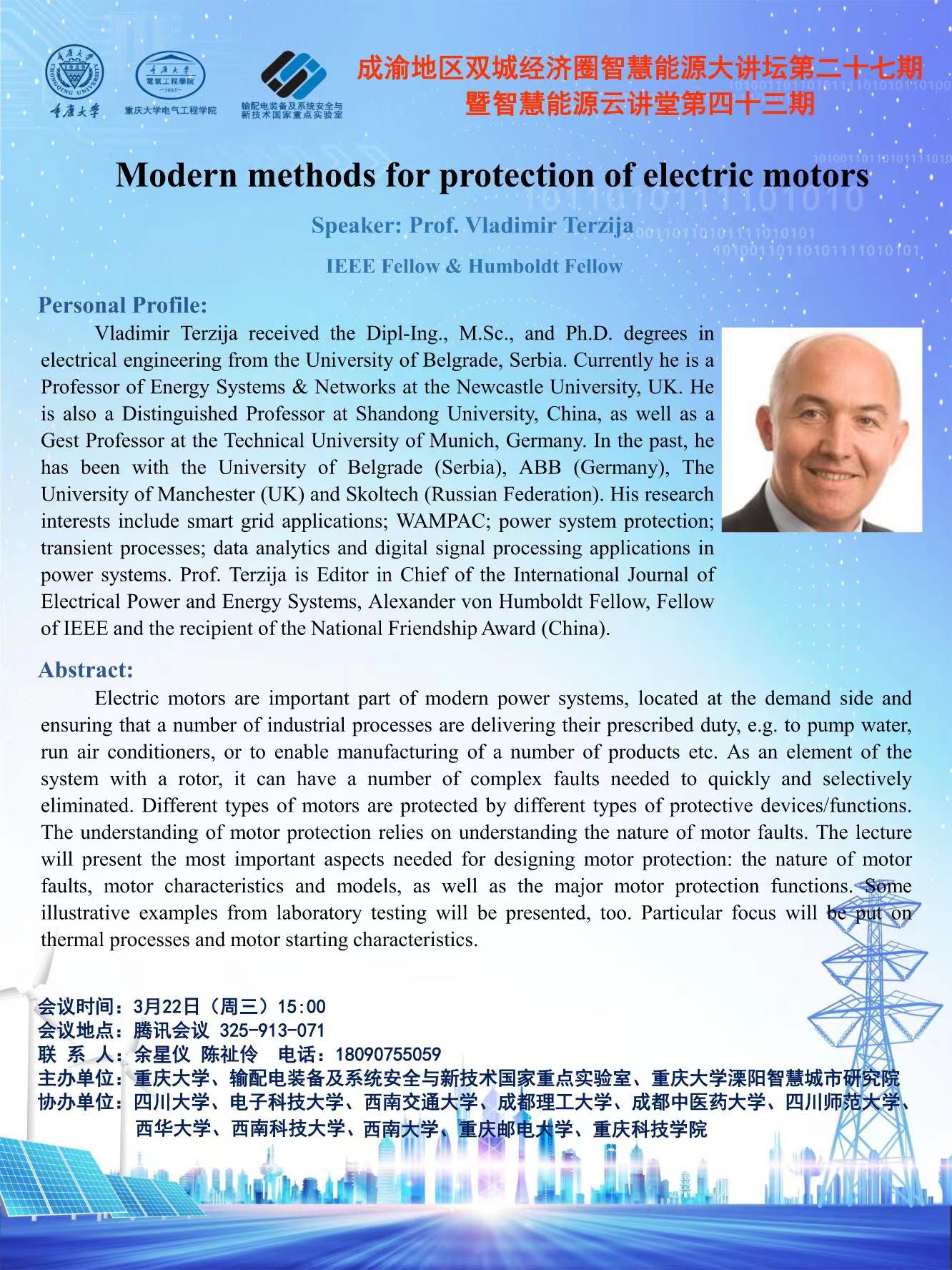报告题目:Modern methods for protection of electric motors
报 告 人:Prof. Vladimir Terzija
会议时间:3月22日(周三) 15:00
会议地点:腾讯会议 325-913-071
主办单位:重庆大学、输配电装备及系统安全与新技术国家重点实验室、重庆大学溧阳智慧城市研究院
协办单位:四川大学、电子科技大学、西南交通大学、成都理工大学、成都中医药大学、四川师范大学、西华大学、西南科技大学、西南大学、重庆邮电大学、重庆科技学院
Personal Profile:
Vladimir Terzija received the Dipl-Ing., M.Sc., and Ph.D. degrees in electrical engineering from the University of Belgrade, Serbia. Currently he is a Professor of Energy Systems & Networks at the Newcastle University, UK. He is also a Distinguished Professor at Shandong University, China, as well as a Gest Professor at the Technical University of Munich, Germany. In the past, he has been with the University of Belgrade (Serbia), ABB (Germany), The University of Manchester (UK) and Skoltech (Russian Federation). His research interests include smart grid applications; WAMPAC; power system protection; transient processes; data analytics and digital signal processing applications in power systems. Prof. Terzija is Editor in Chief of the International Journal of Electrical Power and Energy Systems, Alexander von Humboldt Fellow, Fellow of IEEE and the recipient of the National Friendship Award (China).
Abstract:
Electric motors are important part of modern power systems, located at the demand side and ensuring that a number of industrial processes are delivering their prescribed duty, e.g. to pump water run air conditioners, or to enable manufacturing of a number of products etc. As an element of the system with a rotor, it can have a number of complex faults needed to quickly and selectively eliminated. Different types of motors are protected by different types of protective devices/functions.The understanding of motor protection relies on understanding the nature of motor faults. The lecture will present the most important aspects needed for designing motor protection: the nature of motor faults, motor characteristics and models, as well as the major motor protection functions. Some illustrative examples from laboratory testing will be presented, too. Particular focus will be put on thermal processes and motor starting characteristics.



